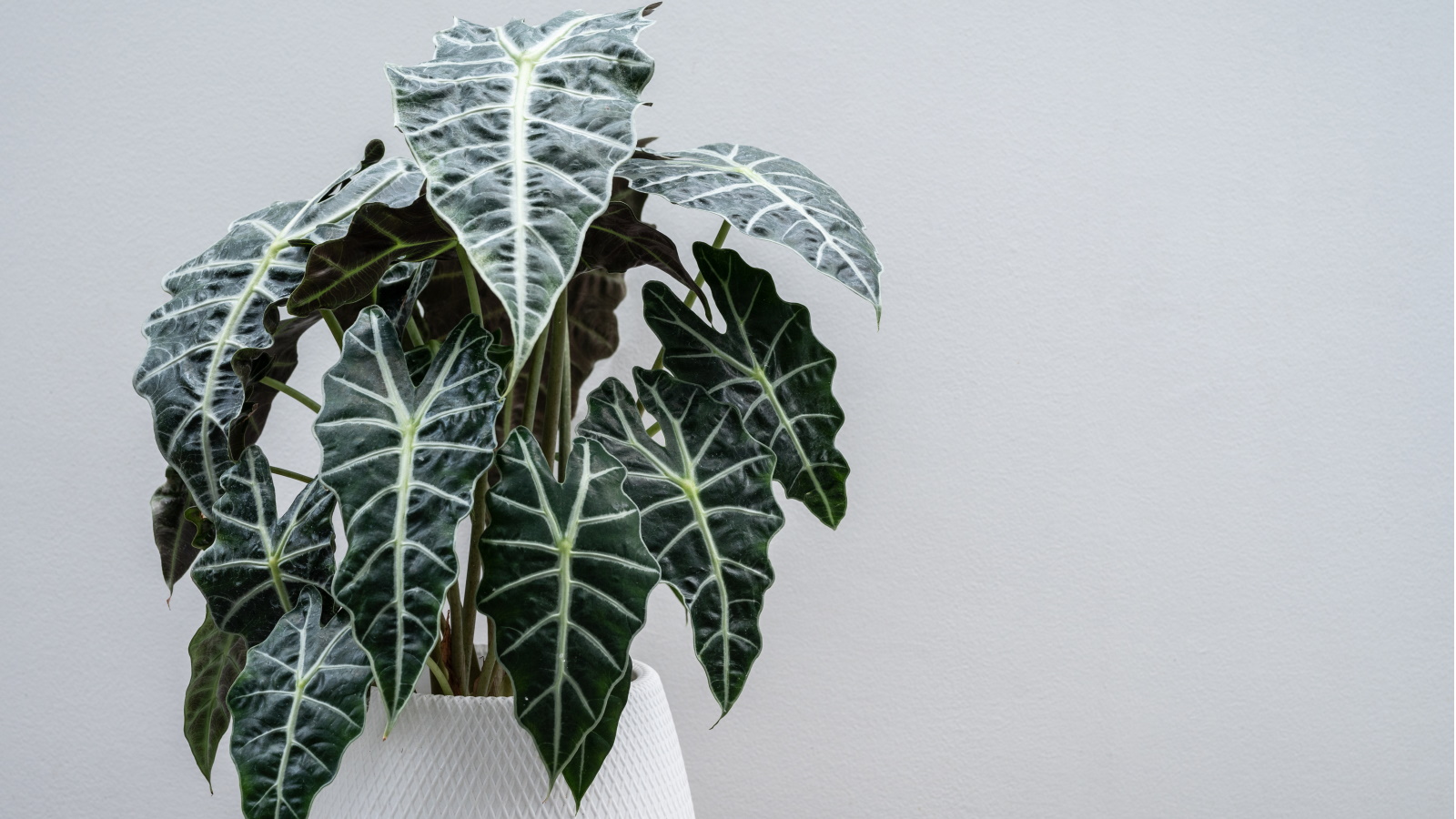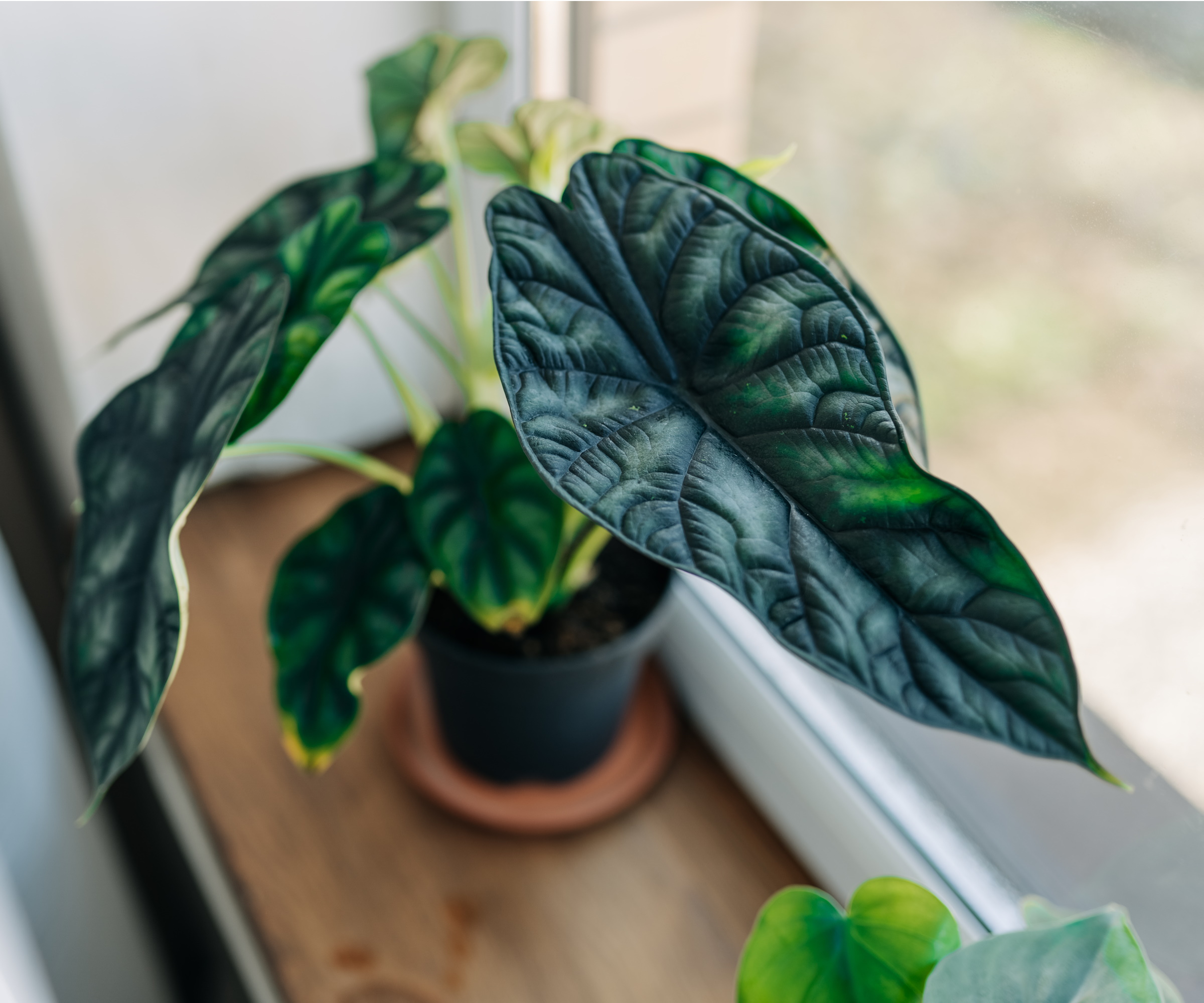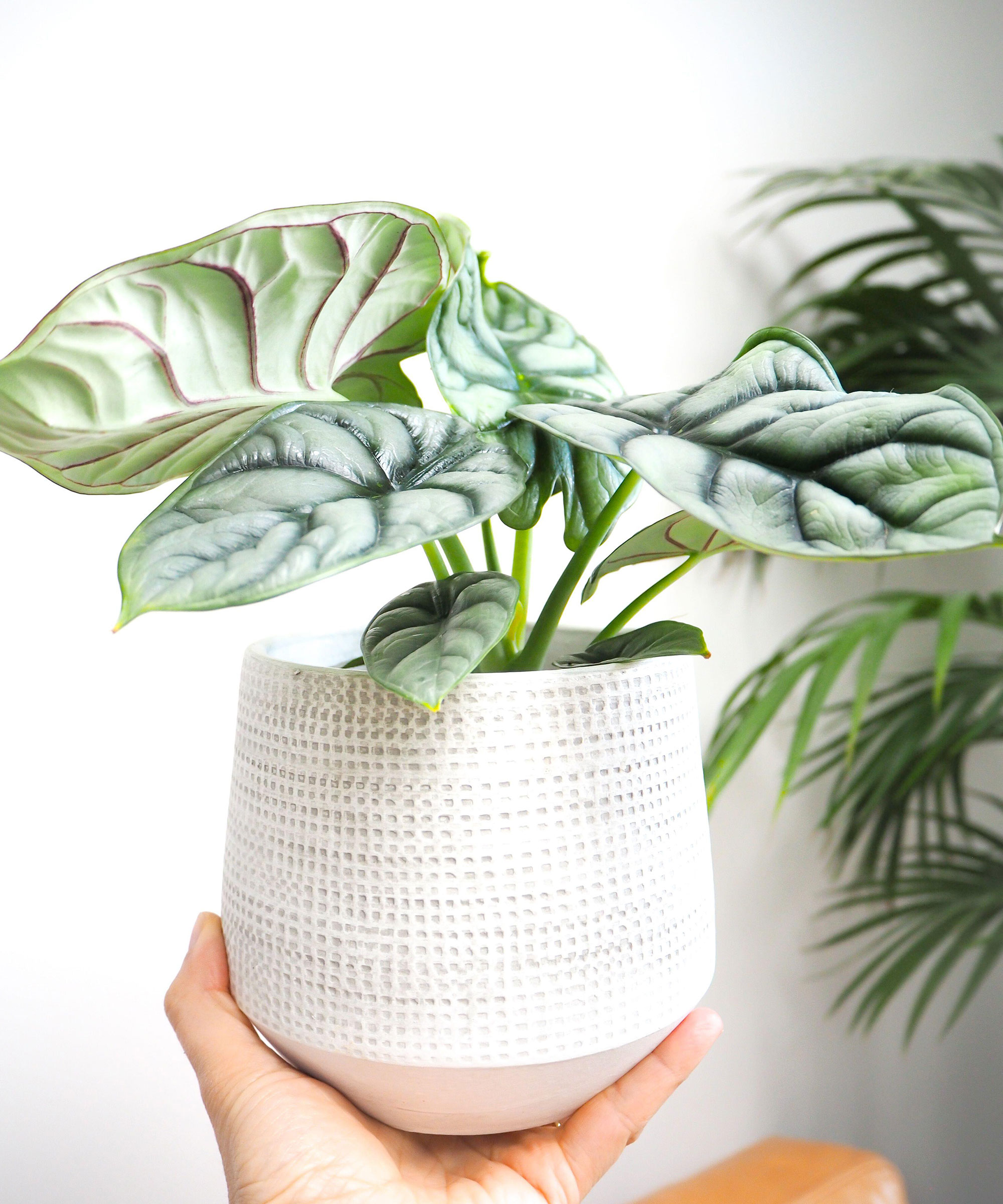
An essential task when looking after any indoor plant is repotting your beloved houseplants when they get too big for their current home – it may seem daunting but this is an essential plant of houseplant care.
Alocasias, or elephant ear plants, are popular indoor plants, known for their beautifully shaped foliage. 'Neglecting to repot an alocasia plant can lead to various issues that affect its health, growth, and overall well-being. It is important to monitor the plant's growth and root health and repot it when necessary to ensure its longevity and vitality,' says Autumn Hilliard-Knapp, houseplant expert from Perfect Plants Nursery.
But don't worry, repotting your alocasia is easy enough, and we've asked the experts for their top tips on how to do it successfully.
How to repot an alocasia

Learning how to report alocasia is not as hard as it may initially seem, just make sure you have a few essential materials to hand before you get started:
- Slightly larger container, like these planters from Amazon
- Well-draining potting mix, like this indoor plant soil mix from Perfect Plants Nursery
- Pruning tools, like these pruning scissors from Bloomscape
- Watering can, like this indoor watering can from Amazon
You can then begin by preparing your new container. It's always a good idea to have clean garden tools so that you don't pass on any harmful bacteria to your plants.
'If desired, you can add a layer of stones or pebbles at the bottom to create a drainage layer,' says Autumn. 'Fill the pot with a well-draining potting mix, leaving enough space at the top for the plant and additional soil,' she adds.
Make sure not to press the soil in too firmly as this can hinder the drainage in the pot and increases the risk of it becoming waterlogged.
Carefully remove your alocasia from its current pot, supporting the roots so that they don't become damaged. At this point you can use your pruning shears to cut away any dead or mushy roots and foliage.
Make sure to loosen the root ball with your hands before placing the plant into the new pot.
'Position the alocasia in the center of the new pot, making sure it sits at a similar depth as it was in the previous pot. Add potting mix around the root ball, gently pressing it down to secure the plant,' says Autumn.
And that's it. Once planted into its new home, make sure to water your houseplant thoroughly to help it settle into the new pot.
When to repot an alocasia

The first thing you need to do is identify that it's time to give your alocasia a new home. Luckily, there are a few tell-tale signs.
'Alocasias love a spacious home. Repotting involves giving your alocasia a fresh pot with new soil, when its roots get crowded in the old one,' says plant expert and CEO of Tree Menders, Evan Torchio.
'You'll know it's time when roots peek out of the drainage holes, or the plant seems stunted. If left un-repotted, roots can become cramped, affecting growth and making the plant more prone to problems,' he adds.
The best way to check if it's time to repot your alocasia is by observing how much room there is for the roots. If they're close to running out of room in the current pot, it's time to give your alocasia a bigger container.
You may also notice a lack of growth and an affected appearance if your alocasia is in a pot too small.
'Alocasia plants that are not repotted when needed may experience stunted growth due to restricted root growth and nutrient uptake. This can result in smaller leaves, lack of new growth, and an overall unhealthy appearance,' says Autumn.
If your alocasia is drooping or the foliage is starting to dicolor, it could be an indication that it's in a pot too small for its size.
'Alocasias sometimes go dormant in the winter months or during times of extreme temperatures, including high heat. It is best to avoid repotting during these times,' says Julie Bawden Davis, indoor plant expert at Healthy Houseplants. It's best to rehome your alocasia when it is actively growing in spring and summer.
FAQs
How often should I repot my alocasia?
Alocasias, or elephant ear plants, grow at an average rate with a particular growth spurt during warmer months. There are many varieties of alocasias and the type you have will affect how often you need to repot it.
'Generally, younger alocasia plants may require repotting every 6-12 months, while mature plants may be repotted once every 2-3 years,' says Autumn.
The best thing to do is keep an eye on your alocasia roots to see if they still have room to grow. If not, it's time to house your plant in a larger container.
If you're growing an alocasia outdoors, you will need to overwinter elephant ear plants to enjoy them again the following year.







